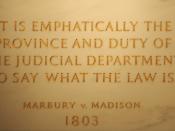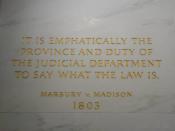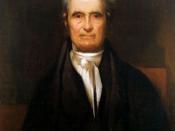The judicial system of the United States of America was first established by the framers in the Federal Convention in Philadelphia (1787). Delegates agreed that a national judiciary system was essential to carry out the interpretation of the constitution. Article III of the United States Constitution depicts the beginning of our current day judicial system, with quite a few adjustments over time. As recorded by James Madison in his journal of the Constitutional Convention, the framers did not spend much time writing Article III because they thought that although an established judicial system would be necessary to carry out the "supreme law of the land" this branch of government could not pose a threat of tyranny as both the executive and legislative branch could. Article III was more specific in its protection of several rights and liberties, such as the guarantee of trial by jury in criminal cases and freedom from bills and attainder or vague charges of treason.
Alexander Hamilton wrote that the judicial system established by the framers was by far the weakest branch of government and the "least dangerous." Although it was the intent of the framers to establish a coequal branch of government, the Supreme Court was not provided with the same amount of respect as the other two branches until several years later. My opinion is that the problem with the judicial system of the time was that even though the judicial system was established to be the supreme law of the land, they court was not given the jurisdiction necessary to carry out their respectful duties. George Washington appointed the first Chief Justice of the Supreme Court to be John Jay just two days after the Judiciary Act of 1789 was signed, a law which established a federal court system in the United States.


